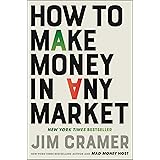The global financial landscape often presents complex challenges for investors seeking stability and growth. Many individuals find themselves grappling with economic uncertainties, from fluctuating job markets to persistent inflationary pressures, which can erode the value of traditional assets. Understanding how to navigate these turbulent waters and preserve wealth becomes an increasingly critical endeavor. Fortunately, alternative asset classes like precious metals and rare coins offer a compelling solution for diversifying portfolios and safeguarding capital during times of chaos.
The accompanying video provides a concise market update for September, delving into the current performance of gold and silver while also highlighting significant developments in the rare coin market. Expanding on these insights, this article offers a deeper dive into the dynamics driving precious metal prices, the historical significance of notable numismatic pieces, and critical market pressures that influence collector behavior. We will explore the nuanced interplay between economic indicators, government policies, and collector demand, providing a comprehensive view for intermediate investors and seasoned numismatists alike.
Decoding Precious Metals: Gold and Silver Market Dynamics
The precious metals market continues to exhibit robust performance, particularly for silver, which has seen prices reaching $43 to $44 per ounce. This impressive surge occurs despite prevailing economic indicators, such as unfavorable jobs numbers, suggesting underlying market forces are at play. A significant portion of newly mined or smelted silver is absorbed by manufacturing, underscoring its dual role as both an industrial commodity and an investment vehicle. The retail sector, however, largely fuels the current strong demand for silver, driving much of its recent price appreciation. This trend raises pertinent questions about the broader economic climate, indicating either a recovering economy or investors seeking alternatives to more expensive assets. The latter explanation appears more plausible, as gold’s price hovers between $37 and $38, making it less accessible for many investors. Consequently, silver becomes an attractive and relatively affordable entry point into the precious metals market, garnering increased attention from buyers.
The Allure of Silver: A More Accessible Precious Metal
Gold’s higher price point naturally directs many investors toward silver, especially during periods of economic uncertainty. This shift in demand explains why many shops are actively acquiring substantial quantities of silver, capitalizing on the heightened interest. However, a crucial consideration for buyers is the premium associated with silver products. While the premium on “junk silver” (circulated silver coinage valued for its metal content) may have largely diminished, it often persists for more refined items. Investors purchasing silver bars, American Silver Eagles, or British Britannias still typically encounter a premium above the spot price. Understanding these premium dynamics is essential for strategic purchasing and maximizing investment returns in the evolving precious metals landscape.
The broader drivers behind the strength of both silver and gold are deeply rooted in global geopolitical and economic shifts. Following significant international events, such as the freezing of Russian assets, central banks worldwide have reevaluated their reliance on U.S. treasuries and the dollar. This strategic reassessment has led to a noticeable pivot toward gold as a preferred reserve asset, with central banks significantly increasing their gold holdings. Such large-scale institutional buying provides a powerful tailwind for the gold market, reinforcing its status as a safe-haven asset. Moreover, persistent concerns about government spending and national debt further fuel investor anxiety. The introduction of large spending bills, often perceived as fiscally irresponsible, makes many wealthy individuals nervous about preserving the value of their assets. In this environment, precious metals stand out as a reliable store of value when traditional markets like real estate show sideways movement or slight declines, while the stock market experiences volatile explosions.
Historic Coinage in Focus: The Oliver Cromwell Gold Broad
Beyond the dynamic movements of the bullion market, the world of numismatics captivates collectors with its rich history and exceptional artistry. Recent auctions have showcased remarkable pieces, including the highly sought-after Oliver Cromwell 1656 gold broad pattern 50 shillings. This exquisite coin commanded an impressive $396,000, reflecting its profound historical significance and extreme rarity. The portrait of Cromwell, depicted in Roman-style armor akin to a classical emperor, provides a fascinating glimpse into the political aspirations and self-perception of this controversial figure. While minted at the Royal Mint, this coinage symbolizes Cromwell’s revolutionary overthrow of the Royal Family, marking a pivotal era in English history. The coin’s existence challenges conventional royal numismatic traditions, representing a period of profound political upheaval.
Oliver Cromwell’s ascent to power followed his pivotal role in the English Civil War, which raged from 1642 to 1651. This conflict ultimately led to the execution of King Charles I, a monumental event in British history, and the establishment of the Commonwealth of England. Cromwell declared himself Lord Protectorate, essentially acting as a military dictator, ruling England until 1658. A staunch Puritan, Cromwell implemented strict moral codes, famously banning all forms of public entertainment, including theaters and drama. His coins, therefore, are not regular issues but rather patterns or proofs, exceptionally rare and highly prized due to their limited mintage and historical context. A compelling historical note is that after the monarchy’s restoration in 1660 under Charles II, Cromwell’s body was exhumed and symbolically beheaded. Despite this posthumous act of retribution, his coins survived, becoming some of the most desired pieces in British numismatics today, testament to their enduring appeal and historical weight.
Beyond Cromwell: British Numismatic Treasures
The Cromwell broad is not an isolated example of valuable historical coinage. Other notable pieces from recent auctions underscore the strong demand for numismatic treasures. A George IV 1826 proof pound fetched $144,000, further demonstrating the enduring appeal and investment potential of British numismatics. Additionally, a colossal Bavarian eight ducats from 1598 realized $96,000, showcasing the international reach and diversity of the rare coin market. These exceptional sales highlight the premium placed on historical context, artistic merit, and verifiable provenance within the collector community. Each coin tells a unique story, connecting its owner to centuries of human endeavor and artistic expression. The consistent performance of such pieces reinforces the stability and growth potential inherent in well-curated numismatic collections.
Strength in Scarcity: The Rare Coin Market Index
The overall health of the rare coin market is robust, as evidenced by the Collector’s Rare Coin Index for U.S. Key Date coins reaching an all-time high. This index shows a staggering 771% increase relative to its 1990 base level, indicating sustained and significant growth. Such performance signals powerful demand for “blue chip” rare coins, which are generally defined as widely recognized, historically significant, and highly liquid issues. Key date coins, characterized by their low mintage figures or specific historical importance within a series, consistently command premium prices. Well-graded pieces, assessed by professional grading services for their condition and authenticity, also contribute significantly to the index’s upward trajectory. This impressive market strength provides a compelling argument for rare coins as a viable and appreciating asset class, especially for long-term wealth preservation. The inherent scarcity and historical value of these items often insulate them from broader market fluctuations, making them attractive during economic downturns.
Modern Coinage: Innovation vs. Tradition
While historical coins capture the imagination, the modern coinage market also shows dynamic trends, albeit with some notable criticisms. The U.S. Mint’s 2025 laser-engraved Silver Eagle generated considerable buzz due to its limited mintage and novel production techniques, creating strong demand among collectors. However, the U.S. Mint faces ongoing criticism regarding its graphic designs, often perceived as uninspired or repetitive, frequently featuring superhero themes. This lack of artistic diversity contrasts sharply with international mints like the Perth Mint, known for their innovative and aesthetically pleasing designs. The recent introduction of a high-silver Somalia African Wildlife Leopard coin, featuring 31 grams of four nines fine silver and different finishes, exemplifies the kind of artistic excellence and variety that collectors desire. The striking beauty and intricate detail of such international issues highlight a significant missed opportunity for the U.S. Mint to expand its collector appeal through more diverse and creative themes. Modern collectors seek not only intrinsic value but also exceptional design and limited availability.
Navigating Market Pressures and Collector Fatigue
Despite the overall positive outlook for precious metals and rare coins, several market pressures warrant careful consideration. Silver, in particular, exhibits more pronounced volatility compared to gold, primarily due to its significant industrial demand. Economic downturns or supply chain disruptions can swiftly impact silver prices, making it a more reactive asset. Furthermore, the market is beginning to show signs of collector fatigue in certain segments. The Royal Mint of the UK, for example, has reported losses in its commemorative coin business. This fatigue suggests that collectors may be less excited by traditional themes or repetitive issues, especially when coupled with high gold costs and broader economic pressures that limit discretionary spending. The constant influx of new issues, without sufficient innovation or historical gravitas, can overwhelm collectors and dilute individual coin value. This trend underscores the importance of strategic collecting, focusing on quality, rarity, and unique features rather than quantity. Mintages, design, and market saturation are all factors influencing collector interest.
Strategic Considerations for Precious Metal Investors
For individuals collecting silver coins, whether ancients, colonials, or modern issues, the rising intrinsic metal value directly translates into increased prices. This effect often extends beyond mere collector demand, elevating the overall market worth of silver numismatic pieces. Rare, well-graded historical silver coins, particularly those with verifiable provenance or unusual features, consistently perform exceptionally well in top auctions. These pieces represent tangible assets with both intrinsic material value and historical significance. Similarly, limited modern issues featuring special elements like privy marks, new die technology, or unique finishes are gaining substantial collector interest and frequently sell out quickly. These items appeal to collectors seeking novelty and exclusivity within their portfolios. However, rising metal prices can elevate entry barriers, making it more challenging for new collectors to participate. Macroeconomic risks, including rising interest rates, inflation, and global instability, also influence buyer behavior, compelling caution and thoughtful portfolio adjustments in this dynamic market.
The SALT Tax Impact on High-Net-Worth Investors
For U.S. investors, an important legislative development impacts investment capacity: the State and Local Tax (SALT) deduction. The recent “big beautiful bill” includes a temporary adjustment to this deduction. Historically, the SALT deduction, which allows taxpayers to deduct certain state and local taxes from their federal taxable income, was capped at $10,000 following the Trump tax breaks. The new provisions temporarily raise this cap to $40,000 for a few years, effectively freeing up substantial capital for higher-income individuals. While a large portion of this newly available capital will likely flow into traditional investments like stocks and bonds, it creates additional disposable income for the wealthiest 20% of the population. This influx of capital could undoubtedly spill over into alternative asset classes, including the rare coin market. Investors might allocate a portion of these newfound funds toward coin purchases, further stimulating demand within the numismatic community. This tax adjustment, therefore, represents a significant financial tailwind for those with substantial assets, potentially boosting investment in collectible items like precious metals and rare coins.











